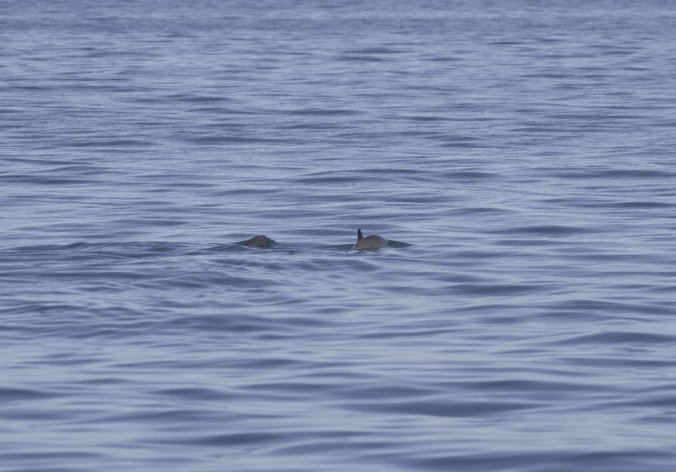
With only around 10 individuals left in the world, a tiny porpoise called the vaquita is facing extinction. Somewhat surprisingly, despite the relative shallowness of its gene pool, inbreeding isn’t likely to be an issue for the porpoise. This is according to a new study by the National Marine Fisheries Service, National Oceanic and Atmospheric Administration (NOAA), University of California, San Francisco, and other groups around the globe.
The vaquita, also known as the California harbor porpoise, is the smallest cetacean and makes its home in the northern part of the Gulf of California. Over the decades, the diminutive mammals have been caught as bycatch in gillnets, and these accidental drownings have devastated their population. Ultimately, gillnets (and other random deaths) are the biggest risk the incredibly small population faces, said Jacqueline Robinson, one of the authors of the paper and postdoctoral scholar at the UCSF Institute for Human Genetics.
The reasoning goes that vaquitas have had a small population size for thousands of years and have experienced catastrophic population decline. This is a similar situation to one faced by the Channel Island Fox. “But through protection, conservation action, and captive breeding, those fox populations were able to rapidly recover and reach their pre-decline population sizes,” Robinson told Ars.
Shallow gene pool
Because the vaquita has a long-term history where its population sizes have been small, it may have a reduced risk of future genetic consequences from inbreeding, according to Robinson. To study this, Robinson and her team looked into the sequenced genome of around 20 archival vaquita tissue samples. This is “around twice as many vaquitas left remaining in the wild,” she said. “It would seem that the odds are not good, but at this point, there are many examples of species that have rebounded from numbers as low or lower than the vaquita is now at.”
The vaquita has existed for millennia at relatively low population sizes, Robinson said, which has led the species to have low levels of diversity across their genome. Typically, this would be bad news. But in this case, it just reflects their natural rarity, she said. Over the generations, the species has “historically purged” any harmful genetic mutations that might threaten the population going forward.
The team also used simulated future populations of the porpoise under different scenarios, altering variables such as deaths and genetic diversity. For the sake of the simulations (and because it’s the leading cause of vaquita death), the simulation assumes that deaths are caused by gillnet bycatch, but Robinson noted that individuals could be taken out of the population through other means. The way researchers model bycatch is by randomly removing individuals from the population. If bycatch deaths are stopped entirely, only 6 percent of the simulations end in the species going extinct. However, even if the deaths decrease by 80 percent, 62 percent of simulations result in the species’ untimely end.
“A crucial time”
In all, there’s not much room for error. “This is a crucial time. We don’t have time to wait and see what happens… If we want to limit the chance that the vaquita goes extinct, we need to eliminate the bycatch as much as possible,” Robinson said, adding that vaquita bycatch is still happening.
Over the past few months, a high number of boats using gillnets in the area have been reported, Robinson said. There is technically a ban in the vaquita’s natural habitat, but it’s not currently being enforced, she said. Some vaquita deaths have been tied to the illegal poaching of a fish called the totoaba, which is of a similar size to the vaquita. The totoaba has a swim bladder that is sometimes used in traditional Chinese medicine, said Barbara Fornssler, a senior scientist with NOAA Fisheries and another author of the paper. Since 2011, there has been a catastrophic decline in the vaquita population as a result, she said.
Added to this, the current administration in Mexico has stopped paying fishers in the region to cease fishing, which they had done previously. While gillnet fishing in the region is illegal, because the Mexican government is not paying fishers to forgo their trade, many have gone back to the fishing method.
Science, 2022. DOI: DOI: 10.1126/science.abm1742 (About DOIs)
https://arstechnica.com/?p=1852536

